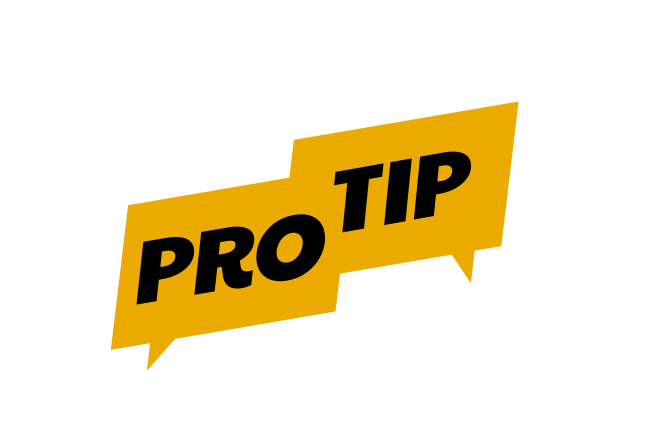For a business that relies on in-person sales, Google maps ranking is vital. Of all the people who search the internet on their smartphones, 30% of them are location-driven searches. That means a vast number of people will see your business.
Most people who search for local businesses online will visit that business within a day. This is a massive opportunity for lead generation and sales to be made. Google map rankings can establish a business as a local leader in the field. With local rankings, you only compete against the local area.
Source: https://bippermedia.com/the-importance-of-google-maps-ranking-for-your-small-business/
Here are the tips on how to rank your business:
1. Add your business to Google Maps
To rank on Google Maps, you have to be present on Google Maps. So you need to go to Google Maps and type your business name into the search bar.

If there’s no information about your business yet, use the Add a missing place option. A window will pop up, offering you to fill out the basic business information like the open hours, category, and location. Once you’re done, click Send. Your application will get reviewed and approved, and you’ll get an email notification.
2. Add your business to Google My Business and optimize the listing
Technically, you don’t need a GMB listing to rank on Google Maps. But in fact, you do, as GMB does matter a lot when it comes to local ranking factors:
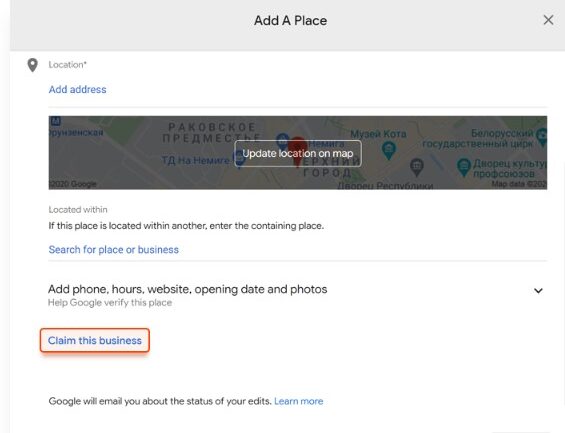
You can create a GMB listing right when you add your business to Google Maps. To do this, click Claim this business in the Maps pop-up. This action will immediately take you to the Google Business Profile page, where you can fill out your listing, providing details and information about your company. As for the optimization of the GMB listing, the rule is simple: carefully fill out every line and section you see. Or check our comprehensive guide on Google My Business listing optimization.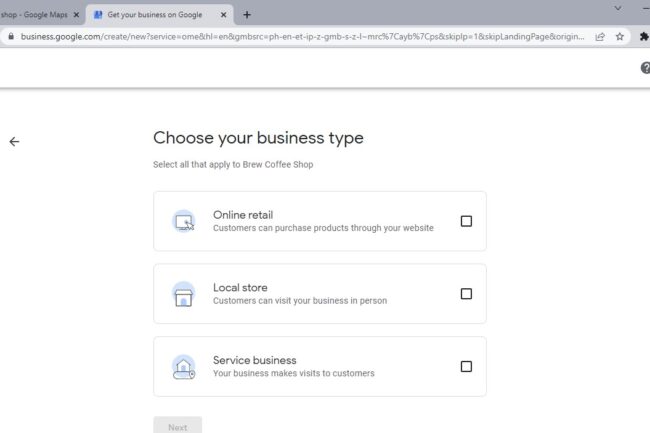 Select the “Info” tab, which includes your name, category, address, service area (if applicable), hours, special hours, phone number, website, products, services, attributes, and description. Here are some tips for optimizing these Google My Business account sections for higher ranking on Google Maps:
Select the “Info” tab, which includes your name, category, address, service area (if applicable), hours, special hours, phone number, website, products, services, attributes, and description. Here are some tips for optimizing these Google My Business account sections for higher ranking on Google Maps:
Be consistent with name and address
Google Maps ranks businesses it can trust, and one measure of your trustworthiness is the consistency of information about your business across the web. For example, say you have a business called “North Shore Wellness Center.”

Make sure your business name (creative business name ideas here!) in your Google My Business dashboard is exactly that and not a slight variation, such as N. Shore Wellness Center or North Shore Wellness Ctr. Also, make sure this name is identical across all of your other online properties—your website, Yelp listing, Facebook profile, and more. The same goes for address information (for example, using “St” vs Street”).

Use a local phone number
Google isn’t keen on toll-free (800 and 877) numbers because these types of numbers are frequently used for spam. Use a local telephone number with the area code of your location. This will help you to rank higher in Google Maps, and it will also verify for searchers that your business is located in that area.
Include your tracked and main number
If you use call tracking, use a tracked number for your primary business phone number and your main number as your secondary number. This will get most of your calls coming in through the tracked line so you can see the efficacy of your listing; but with the main number still in your listing, Google can then match your number with the one on your website and other listings.
Keep your hours updated
Google Maps business listings tell users if that business is open, closed, or opening or closing soon. (And during the pandemic, whether it’s temporarily closed—making it an important SEO tactic during COVID-19.) Keeping these hours updated signals to Google that you are active and, therefore, trustworthy, and this will help with your rank. It will also prevent customers from making the trip out to your store only to find that it’s closed or closing—which can sometimes spark a negative review (which hurts your ranking on Google Maps).
Be sure to also update your holiday hours so you don’t get an “hours might differ” label on your listing.
Write a business description
The description on your Google Maps business listing should provide the big picture of your business to help orient visitors; as well as unique attributes to compel searchers. It should also be written in a tone that aligns with your brand, to help establish a better connection. Be sure to include keywords in your business description, as this will help your business listing on Google Maps to rank not just for searches that contain your business name, but for searches for products and services as well.
Properly categorize your business
In terms of ranking, the category of your business as it appears on Google Maps is very important. For your primary category, choose the one that best represents the core offering of your business. If any other categories apply, choose them as secondary categories.

To rank higher in Google Maps, choose primary and additional categories through your Google My Business dashboard.
Keep in mind that you cannot add custom categories, but if you begin typing your main offering into the box, you’ll see a drop-down menu of possible categories to choose from.
Add photos to your Google Maps business listing
Google loves it when you upload photos to your listing. First, because it signals that you are an active listing worthy of ranking higher in results. Second, because Google’s photo-recognition technology is advancing and Google is starting to show images in local search results. And third, because the SEO rule of thumb is that Google loves what consumers love, and consumers love photos. Plus, if you don’t add photos to your listing, it will show a generic map image.
3. Get more reviews
As I’ve mentioned above, reviews do impact your positions on Google Maps and in the local pack. Of course, I mean positive reviews. How do you get them? First and foremost, you can encourage your clients to leave reviews. You can launch a campaign on social media, offer a discount, or just email them to ask their opinion on your business and ask them to rate you. By the way, reviews have their own ranking factors (bet you have seen how Google pushes some of them to the Most Relevant section):
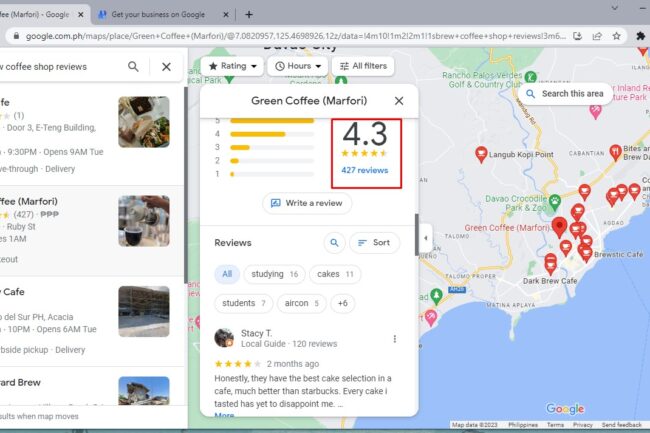
Review score. And sometimes Google even goes beyond the star rating. Some SEOs have reported on Google’s sentiment analysis experiments. Review quantity. The more reviews you have — the better. Keywords in the review text. Your reviews are considered better if they contain relevant keywords. With this in mind, you have to make sure the reviews on your business are numerous and do contain keywords. And to encourage your customers to use the needed keywords, consider asking for reviews of specific products or services of yours.
4. Optimize your website
Although technically you don’t need a website to appear on Google Maps (just like a GMB listing), neglecting organic SEO can harm your Google Maps performance, as there’s a strong correlation between organic traffic and growing positions in the local pack.
Add local keywords
To boost your local positions, enrich your website with local keywords. These are the keywords that let Google see your relevance to a certain location.

In most cases, you can simply add the name of the location you operate in to your landing pages. For example, use New York best coffee instead of just best coffee. Also, you might want to try optimizing the near me keywords. If you need new local keyword ideas, try Rank Tracker’s Keyword Research module. For example, you can use one of your local keywords as a seed one to get new keyword suggestions with the help of the Autocomplete Tools feature.
If you operate in several different locations, consider creating different local landing pages and optimize each for relevant local keywords — these may be names of nearby sites and attractions, cities, etc.
Embed a Google map
Adding Google Maps right on your website is another way to let Google connect your business with the location. In particular, you can point out the directions to your location from the most popular nearby places — it may be an airport, railway station, local attractions, etc.
Keep in mind that the Google Maps API is not free for heavy usage. Still, adding Google Maps on your About and Contact pages (or whatever couple of pages you need) is absolutely viable. Just create a billing account with Google Cloud Platform to get a $200 credit on Google Maps API every month (you won’t be charged unless the usage exceeds these $200).
Make your website responsive
Website responsiveness means that a website functions consistently across any device or screen size. As Google Maps business listings contain a link to your website and nearly 60% of Google searches occur on mobile devices, having a responsive website goes without saying.
5. Build relevant backlinks
High-quality backlinks have always been important for SEO, and local search is not an exception. However, when trying to improve your visibility in local search, make sure to focus on not only thematically, but also locally relevant backlinks.
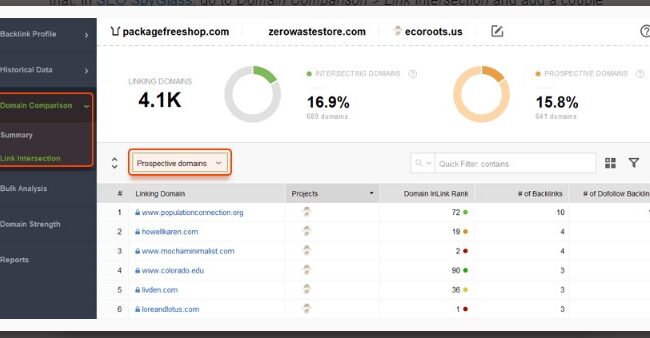
When looking for link-building opportunities, I recommend simply going outside and looking around. Start with your physical neighbors. Then, turn to your business contacts — these may be your partners, providers, customers, etc. Even if a business has nothing in common with you except for the location, a backlink from their website will still signal a “connection” to this particular location and benefit your local rankings. And surely don’t ignore the o oportunity to identify your competitors’ backlinks. To do that, in SEO SpyGlass, go to Domain Comparison > Link Intersection and add a couple of your competitors from Google Maps (just google your business category and location to find them). Then choose Prospective domains from the drop-down menu.
6. Audit and update NAP citations
Name, Address, and Phone number (NAP) refer to your key business information. The more consistent these details are across your business mentions on the internet, the more confident Google is about your business. So it makes sense to audit your NAP citations to spot and correct any inconsistent data.
![]()
Even though some experts say that the role of citations as a ranking signal declines every year. I’d still recommend taking care of how your business is listed at least on the major platforms (like Yelp, Yellow Pages, or Tripadvisor) and the local directories serving your specific area (like a city-wide review platform or an aggregate marketplace).
7. Add Schema Markup to your website
Structured data lets Google better understand information about your business. Schemas for local businesses can be applied to the address, opening hours, social media profiles, etc. As Google crawlers reach your website, they will easily get the vital information thus trusting you more and pulling your listing higher in Google Maps.

Remember to check and validate your schema with Google’s Structured Data Testing Tool to make sure all works correctly.
8. Try Google Maps Ads for ranking
Google Maps Ads is not an organic way of promotion, however, you can still use it as a means of traffic acquisition. As with any PPC campaign, Ads appear on a Google Maps SERP above the organic results, usually one or two at a time. If you want to run an ad for your business on Google Maps, you need to claim your business through your Google Business Profile account and create a Google Ads account.

Ultimately, like any CPC campaign, advertising on Google Maps comes with an obvious benefit of being above other results, only here, the ad leads not to your website, but your GMB listing instead. There are a few ways your PPC results can be shown in Google Maps.
Search Results Ads
When performing a search on a mobile device for a business or service within your area on Google Maps, it will return the nearest businesses based on your physical location and their ratings.
If you want to be at the top of these maps results in a specific area, then Google Maps offers paid local search listings. This kind of result instantly improves any company’s CTR among their peers and brings a bunch of fresh clicks.
Promoted Pins
Promoted pins are another type of paid ad listing and a great way to get noticed when users are browsing areas on the Maps app. Unlike the search results ads, these bolded pins pop out on the map without a user having to search for anything.
The type of business being promoted will determine what color and style the icons are. What’s more, you can even add a logo to be displayed instead of a standard icon.
In-Store Promotions
In-store promotions are placed right on businesses’ listings and tell a user of special promotions they are running. These promotions can be anything from buy-one-get-one-free offers, to discounts on specific products.
In this example, the pin itself is listed as a standard Google My Business store, but when users click on the profile, they’ll see the special in-store promotion.
9. Track your Google Maps rankings
You can monitor your Google Maps positions just the same way you monitor your ordinary SEO positions. Let’s take Rank Tracker for example. What you need is to go to Preferences > Preferred Search Engines and select Google Maps.
What’s more, you can specify the location to track your positions as if from a specific street address. For that, click Add Custom next to the Google Maps button on the list of the search engines and specify the location in the new window. Once in the customization menu, add the address you’re interested in for tracking. Now you’ll be able to track your local rankings around the exact location of your company. For multiple business locations, simply create more projects (you can use as many projects as you need in Rank Tracker, no limits there).
As soon you add your keywords to your project, you can start tracking their SERP and visibility progressions in Google Maps.
To sum it up
Optimizing for Google Maps is not the most obvious way where your SEO strategy can go. Still, with the growth of local business features in SERP (say hi to the local pack) your business does need it to get views, clicks, and eventually paying clients. As you see, the process is not as tough as it may have seemed before you have read this guide.
Have some extra tips to share about how to rank on Google Maps? Share in the comments.

